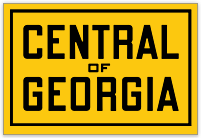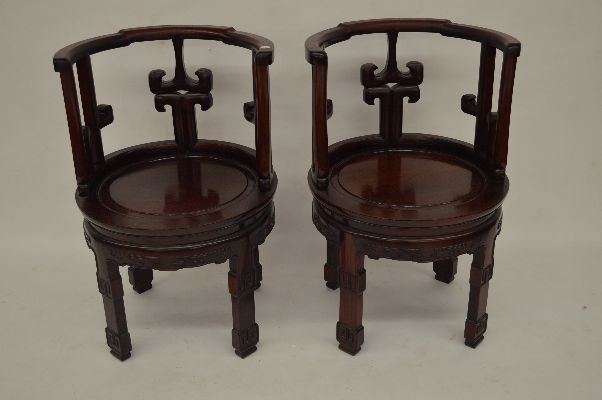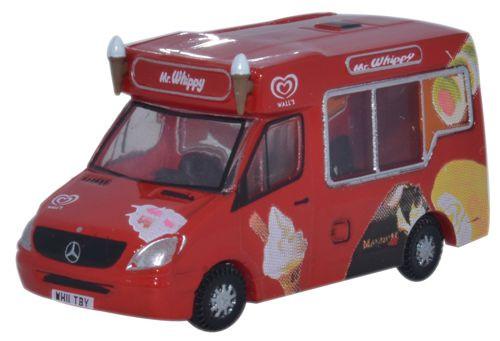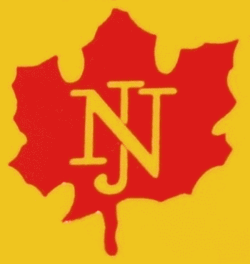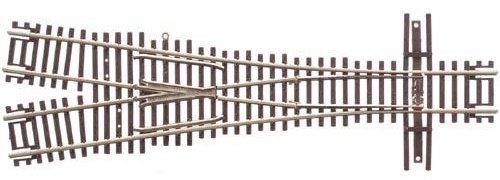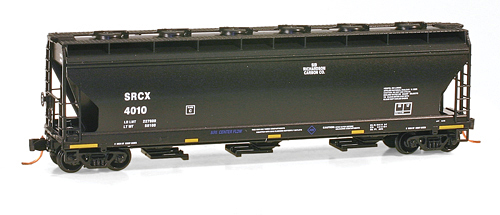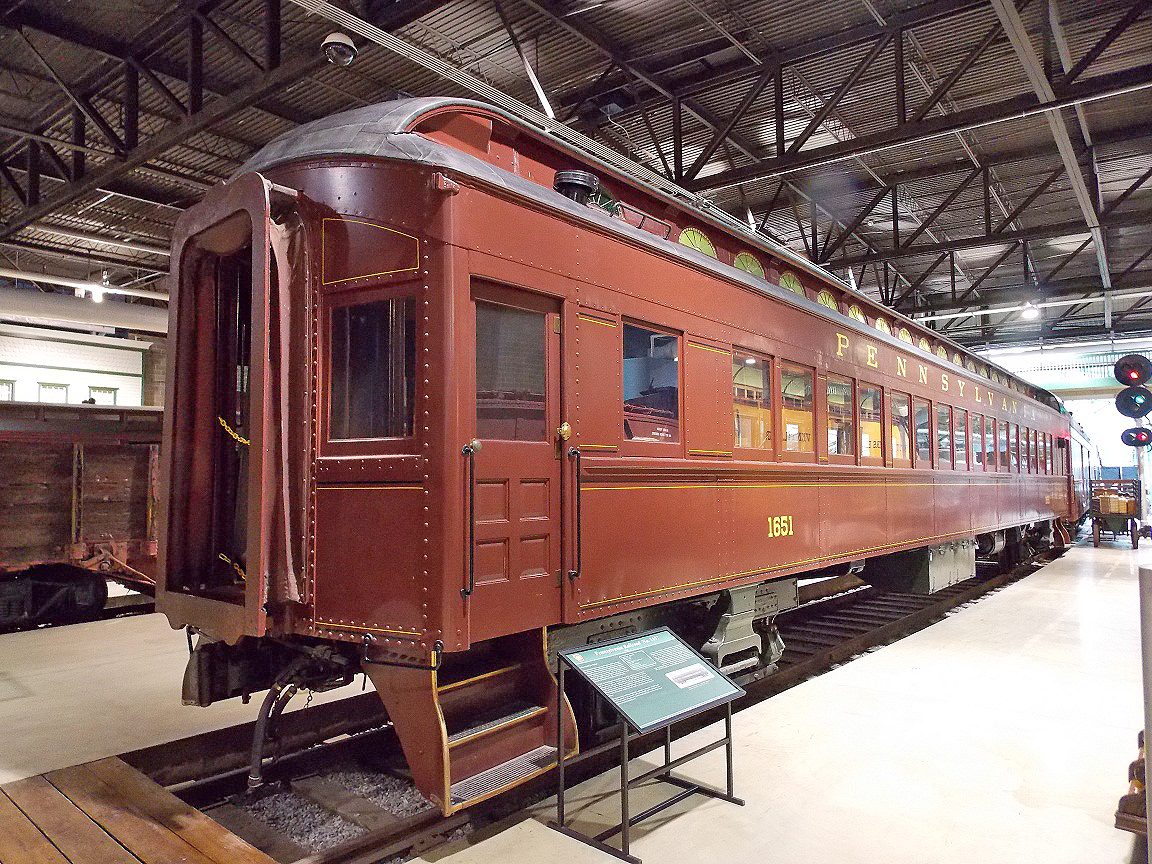Specific Item Information: Built in 1914-1924; In 1907, E. H. Harriman gained control of C of G Railway then later sold it to the IC. Bought by Frisco in 1956, to the disapproval of the ICC. C of G sold in '61. In '63, Southern Railway gained controlled of C of G. According to Arnold Eaves of Central of Georgia Railway Historical Society, these cars were built by Pullman. Car No. 414 was lot number 4601 built in 1921. Car No. 417 was lot number 4791 built in 1924.
Model Information: As construction techniques for carbuilding and track & roadbed improved, car capacity increased from 60-ft to 70-ft, nominally measured at 74 feet over the coupler faces or 70 feet between the end sills. These cars were used for carrying express packages, pre-sorted mail, and passenger luggage from the 1920s to the advent of Amtrak. In mail & express service (M&E), they were interlined with connecting railroads to provide seemless service.
Prototype History: Heavyweight Passenger Cars were the prevalent style of railcars used for passenger service during the interwar period. They were constructed of concrete, wood and steel. The floor was often of poured concrete, which helped give these cars a smoother ride than older wooden-body cars. Also, because of their heavy construction, they were also much less likely to "telescope" when a collision occurred. They were much heavier than modern passenger cars due to the materials used in their construction. They were so heavy that they often (but not always) required three-axle bogies to support them.
Heavyweights frequently had what is called a clerestory roof. The center of the roof was higher than the sides, in that it was stepped up. The lightweight cars had smooth, rounded roofs. Heavyweight passenger cars typically weigh around 1 ton per foot of length. So a 85' car weighs in the area of 85 tons for a heavyweight car.
From Wikipedia
Heavyweights frequently had what is called a clerestory roof. The center of the roof was higher than the sides, in that it was stepped up. The lightweight cars had smooth, rounded roofs. Heavyweight passenger cars typically weigh around 1 ton per foot of length. So a 85' car weighs in the area of 85 tons for a heavyweight car.
From Wikipedia
Road Name History: The Central of Georgia Railway (reporting mark CG) started as the Central Rail Road and Canal Company in 1833. As a way to better attract investment capital, the railroad changed its name to Central Rail Road and Banking Company of Georgia. This railroad was constructed to join the Macon and Western Railroad at Macon, Georgia, and run to Savannah. This created a rail link from Chattanooga, on the Tennessee River, to seaports on the Atlantic Ocean. It took from 1837 to 1843 to build the railroad from Savannah to the eastern bank of the Ocmulgee River at Macon; a bridge into the city was not built until 1851.
During the Savannah Campaign of the American Civil War, conducted during November and December 1864, Federal troops tore up the rails and converted them into "Sherman's neckties."
At the end of 1956 the CofG operated 1,764 miles (2,839 km) of road and 2,646 miles (4,258 km) of track; that year it reported 3208 million net ton-miles of revenue freight and 73 million passenger-miles. Those totals do not include the 144-mile (232 km) S&A, the 10-mile (16 km) L&W, the 20-mile (32 km) WS or the 36-mile (58 km) W&T. The Central became a Southern Railway subsidiary on June 17, 1963. In 1971 the Southern formed the Central of Georgia Railroad to merge the Central of Georgia Railway, the Savannah and Atlanta Railway, and the Wrightsville and Tennille Railroad.
Today the Central of Georgia exists only as a paper railroad within the Norfolk Southern Railway group. 42 miles (68 km) of the CofG's former mainline are currently leased by the Chattooga and Chickamauga Railway from the State of Georgia.
During the Savannah Campaign of the American Civil War, conducted during November and December 1864, Federal troops tore up the rails and converted them into "Sherman's neckties."
At the end of 1956 the CofG operated 1,764 miles (2,839 km) of road and 2,646 miles (4,258 km) of track; that year it reported 3208 million net ton-miles of revenue freight and 73 million passenger-miles. Those totals do not include the 144-mile (232 km) S&A, the 10-mile (16 km) L&W, the 20-mile (32 km) WS or the 36-mile (58 km) W&T. The Central became a Southern Railway subsidiary on June 17, 1963. In 1971 the Southern formed the Central of Georgia Railroad to merge the Central of Georgia Railway, the Savannah and Atlanta Railway, and the Wrightsville and Tennille Railroad.
Today the Central of Georgia exists only as a paper railroad within the Norfolk Southern Railway group. 42 miles (68 km) of the CofG's former mainline are currently leased by the Chattooga and Chickamauga Railway from the State of Georgia.
Brand/Importer Information: Wheels of Time was founded by Matthew Young in the fall of 1995. From an early age, Matthew has had a passion for trains, both in full-size and in miniature. His family frequently went out of their way so he could ride the train, or simply watch the action on the tracks. "On one occasion mom took us to San Francisco along the waterfront. Spotting a State Belt ALCo S-2 locomotive switching the wharves, I persuading my mom to follow it. I watched in wonder as I saw and heard the hit-cup sputtering of the ALCo engine as it revved-up to move railroad cars on and off the car float at Pier 43." Other early family experiences included watching Southern Pacific freight and Amtrak's San Joaquin Amfleet trains roll by as his family waited to be seated at Spenger's in Berkeley, which sat happily right next to the tracks. "My brother and I would shoot pictures of the trains with our Instantmatic 110 cameras, sometimes only getting the wheels or worse yet ... getting a real good close up of my big thumb."
Matthew and his brother built models of all kinds, but their model train career began in elementary school when they started making 3-D cardboard miniature trains from pictures found in the pages of Trains Magazine and Model Railroader Magazine. On a visit, many years later, with the late Richard Buike of Trackside Trains in Burlingame, California, the conversation turned to the lack of N-Scale passenger trains and how the few that existed didn't look right. "I told him right then and there that I was going to produce high quality, historically accurate passenger railroad cars. Even I was a little surprised when I said this." The first product was a 1950 Pullman-Standard "10-6" sleeping car made of brass. Wheels of Time became one of the first makers of historically accurate and realisticly detailed passenger train cars. At Wheels of Time, we research original equipment and recreate it with CAD software for production. We're lovers of history and sticklers for detail. On our line of Transit Motor Coaches (a fancy way of saying "buses"), even the destination *roll* signs are historically accurate. Be sure to check out all our beautiful and accurate products. We hope you'll come to share our passion for trains, here recreated in miniature. At Wheels of Time, you get to take home a piece of a fascinating history.
Wheels of Time manufactures historically accurate model trains, vehicles, and model railroad accessories with a real *wow* factor. Our obsession with detail and historical accuracy is reflected in our exceptional design and production: hold a Wheels of Time model in your hand and you'll be tempted to say, 'It's the real thing!'
Matthew and his brother built models of all kinds, but their model train career began in elementary school when they started making 3-D cardboard miniature trains from pictures found in the pages of Trains Magazine and Model Railroader Magazine. On a visit, many years later, with the late Richard Buike of Trackside Trains in Burlingame, California, the conversation turned to the lack of N-Scale passenger trains and how the few that existed didn't look right. "I told him right then and there that I was going to produce high quality, historically accurate passenger railroad cars. Even I was a little surprised when I said this." The first product was a 1950 Pullman-Standard "10-6" sleeping car made of brass. Wheels of Time became one of the first makers of historically accurate and realisticly detailed passenger train cars. At Wheels of Time, we research original equipment and recreate it with CAD software for production. We're lovers of history and sticklers for detail. On our line of Transit Motor Coaches (a fancy way of saying "buses"), even the destination *roll* signs are historically accurate. Be sure to check out all our beautiful and accurate products. We hope you'll come to share our passion for trains, here recreated in miniature. At Wheels of Time, you get to take home a piece of a fascinating history.
Wheels of Time manufactures historically accurate model trains, vehicles, and model railroad accessories with a real *wow* factor. Our obsession with detail and historical accuracy is reflected in our exceptional design and production: hold a Wheels of Time model in your hand and you'll be tempted to say, 'It's the real thing!'
Item created by: nscalestation on 2016-12-13 20:43:35. Last edited by Alain LM on 2021-06-21 12:01:36
If you see errors or missing data in this entry, please feel free to log in and edit it. Anyone with a Gmail account can log in instantly.
If you see errors or missing data in this entry, please feel free to log in and edit it. Anyone with a Gmail account can log in instantly.




